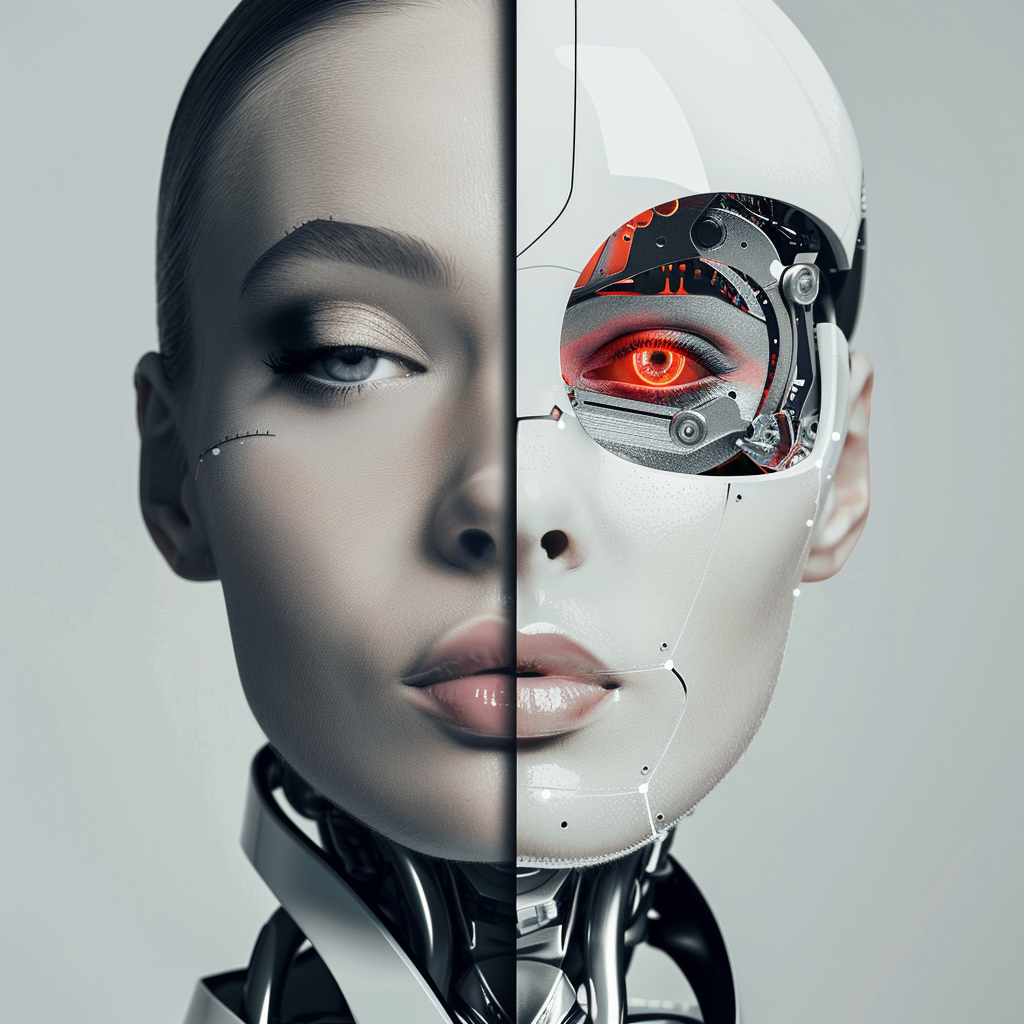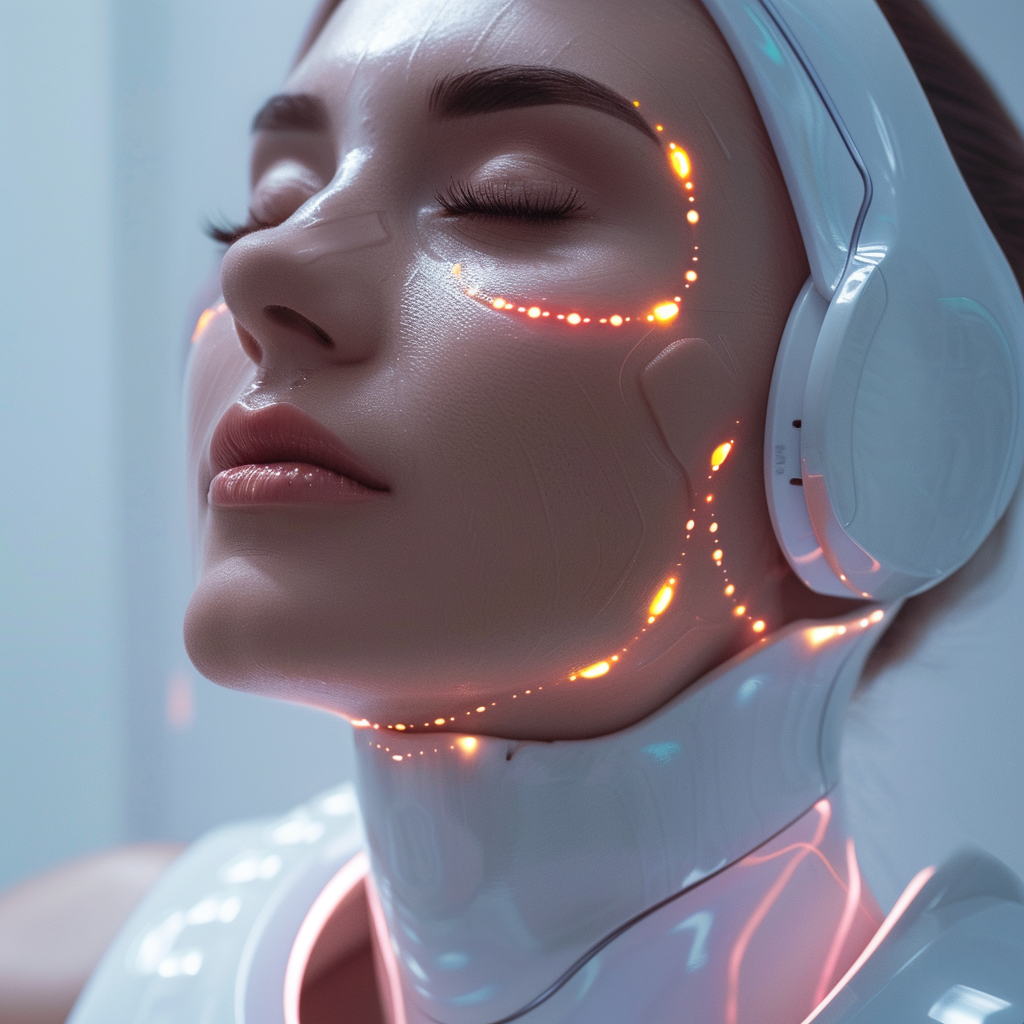

The introduction of lifelike robot skin, often referred to as “e skin” or “electronic skin,” is set to create seismic shifts across a multitude of industries. In the cosmetics sector, this advancement allows for more accurate testing on robots, reflecting responses akin to biological skin better than synthetic materials, thus aligning with the ethical movement towards cruelty-free products. The medical field stands to gain tremendously, with lifelike skin on robotic models providing an unprecedented platform for plastic surgeons and medical students to refine their skills, simulate surgeries, and practice procedures in a controlled environment. Even the fields of soft robotics, elderly care, and rehabilitation are poised for transformation, as the potential for self-healing and sensory capabilities in e skin could lead to more responsive, empathetic care solutions. Additionally, electronic skin integrated with health monitoring systems can offer continuous tracking of vital signs, enhancing patient care. As businesses leverage these innovations, the future promises more engaging, personalised, and humane interactions in hospitality and customer service sectors, heralding a new era where technology better mimics and enhances the human experience.
The advent of lifelike robot skin, known as e skin technology, made from living tissue, is set to usher in a new era of innovation within the cosmetics industry. Traditional methods of product testing have often relied on synthetic materials or, less ethically, live animals, neither of which accurately replicate human skin reactions. By utilising science robotics with stretchable e skin, equipped with advanced temperature sensors, cosmetic researchers can now test products in an environment that closely mirrors real-world conditions. This breakthrough not only enhances the precision and reliability of product testing but also supports the growing demand for cruelty-free practices. As a result, companies can develop safer, more effective products while aligning with ethical standards and consumer preferences, effectively revolutionising the field of cosmetic research through advancements in mechanical engineering.
The medical field is on the cusp of a revolutionary transformation with the advent of lifelike robots enveloped in robotic skin for surgical training. These advanced robotic models, featuring robotic arms and hands with electronic skins, provide an extraordinary platform for plastic surgeons and medical students to practice surgical procedures in a setting that closely mimics real-life surgeries. The nuanced textures and responses of robotic skin, coupled with precise control and self-healing capabilities, allow for an accurate simulation of various skin conditions and surgical interventions, enhancing both educational and practical outcomes. This breakthrough equips trainees with a more profound understanding and hands-on experience, significantly improving their preparedness for actual medical procedures. The ability to rehearse complex surgeries without risk to real patients represents a monumental leap forward in medical education, promising better-trained surgeons and improved patient care.
The field of plastic surgery is experiencing a groundbreaking transformation thanks to the development of robots outfitted with advanced e-skin technology. These advanced robotic arms, equipped with lifelike human skin, offer an unprecedented opportunity for plastic surgeons to practice and perfect their techniques in a highly realistic, risk-free environment. By incorporating flexible electronics that simulate the unique textures and responses of real human skin, these robots allow surgeons to rehearse complex procedures, refine their skills, and anticipate potential challenges with greater accuracy. This innovation significantly improves the quality of training, leading to better-prepared surgeons and, ultimately, enhanced patient care. With the ability to mimic various skin conditions and surgical outcomes, e-skin technology is breaking barriers in surgical education and setting new standards for excellence in the field of plastic surgery. Additionally, the integration of communication devices and the potential for detecting nerve agents highlight the versatility and future applications of this cutting-edge technology.
The rehabilitation sector stands to benefit immensely from the integration of electronic skin in soft robotics. This cutting-edge technology simulates the tactile qualities and healing properties of human skin, creating a transformative tool for patient care and therapy. New research in artificial intelligence has enabled these lifelike robotic models to sense and respond to touch, pressure, and temperature changes through advanced sensing functions and electrical signals. Mimicking the capabilities of a human hand, these models can provide more nuanced and responsive care to patients undergoing physical therapy. Additionally, the self-healing properties of electronic skin ensure the longevity and durability of these robotic aids, reducing maintenance costs and enhancing their utility over time. These advancements offer the potential for more empathetic, adaptive, and effective rehabilitation processes, ultimately improving patient outcomes and quality of life.
The integration of living skin tissue into robotic arms is set to revolutionise the user experience across various sectors by introducing a more human-like interface. Researchers have developed innovative e-skin, allowing robots to not only mimic the tactile sensations of human skin but also respond to touch, pressure, and temperature variances with impressive accuracy. This stretchable e-skin enables robotic arms to offer tactile sensing that closely replicates human responses. Whether deployed in customer service, hospitality, or personal assistance roles, robots fitted with lifelike e-skin can offer more empathetic and engaging interactions. This sensational development enhances the comfort, reliability, and overall experience for users, thereby bridging the gap between human and machine interactions and paving the way for more intuitive and effective service solutions on any surface.
The hospitality industry is on the brink of a revolutionary transformation with the integration of robots equipped with electronic skin. This cutting-edge technology, developed by innovative centers like Gao’s Lab, allows robotic hands to simulate the tactile sensations and nuanced responses of human skin, creating more engaging and personalised interactions for guests. By closely mimicking human warmth, touch, and responsiveness, these e-skins improve the quality of customer service, making it more intuitive and empathetic. Whether greeting guests, providing assistance, or handling inquiries, robots with electronic skin enhance the overall guest experience, bridging the gap between technology and human touch. This advancement sets new standards for customer care in hotels, restaurants, and service-oriented businesses, promising a future where technology not only augments but also humanises the guest experience. Moreover, this technology has many other applications, including tactile sensing in various industries, exemplifying its wide-ranging potential.
With increasing consumer demand for ethical and cruelty-free products, the beauty and skincare industries are exploring innovative alternatives to traditional animal testing. One promising solution involves the integration of artificial intelligence and stretchable e skin in robotics. Researchers are developing advanced robotic arms equipped with lifelike e skins that mimic the tactile qualities and responses of human skin with remarkable accuracy. This cutting-edge technology offers a viable and humane alternative for product testing, ensuring both safety and efficacy without causing harm to animals. By employing robotic arms with stretchable e skin, companies can conduct rigorous tests that align with the ethical standards and preferences of conscientious consumers. This approach not only paves the way for groundbreaking developments in product research and development but also highlights the potential applications of AI and e skins in setting new benchmarks for cruelty-free practices. As a result, the adoption of living skin tissue in robotic models could be a game-changer, driving the future of ethical innovation in the industry.
The advent of robots with living skin holds the promise of unlocking unprecedented opportunities across diverse fields, transforming the way we interact with technology and pushing the boundaries of what robots can achieve. By incorporating living skin tissue, these robots can emulate the tactile sensations and responsive qualities of human skin, making them indistinguishable from human touch in many interactions. This leap in robotic innovation extends beyond mere aesthetics; it enables profound applications in healthcare, customer service, and beyond. In healthcare, robots with living skin can deliver more realistic medical training and empathetic patient care. Within customer service, they can foster more authentic and engaging interactions, enhancing overall user satisfaction. The ability to blend human-like touch with robotic precision signifies a monumental shift toward more humanised, efficient, and effective solutions, heralding a new era of technological integration that bridges the gap between humanity and machinery.

This website uses cookies to improve your experience. Choose what you're happy with.
Required for the site to function and can't be switched off.
Help us improve the website. Turn on if you agree.
Used for ads and personalisation. Turn on if you agree.
This website uses cookies to improve your experience. Choose what you're happy with.
Required for the site to function and can't be switched off.
Help us improve the website. Turn on if you agree.
Used for ads and personalisation. Turn on if you agree.